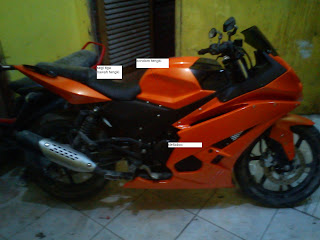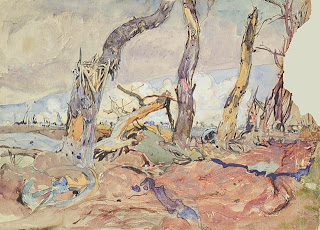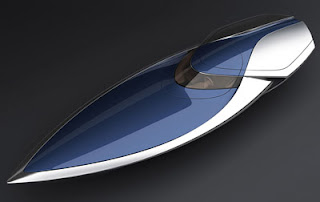AsKep Gagal Jantung Kongestif / CHF.Setelah memposting tentang
Page Rank Google Update maka kita kembali kepada postingan tentang
asuhan keperawatan lagi ya sobat yaitu
AsKep Gagal Jantung Kongestif / CHF .Masih sekitar permasalahan penyakit jantung juga kok sob.Silakan menyimak sahabat
Asuhan Keperawatan Pasien Dengan Gagal Jantung Kongestif / CHFA. Pengertian
Gagal jantung kongestif adalah keadaan dimana jantung tidak mampu lagi memompakan darah secukupnya dalam memenuhi kebutuhan sirkulasi badan untuk keperluan metabolisme jaringan tubuh pada keadaan tertentu,sedangkan tekanan pengisian ke dalam jantung masih cukup tinggi.
B. Patofisiologi
Setiap hambatan pada aliran ( forward flow ) dalam sirkulasi akan menimbulkan bendungan pada arah berlawanan dengan aliran ( backward congestion ).Hambatan pengaliran ( forward failure ) akan menimbulkan adanya gejala backward failure dalam sirkulasi aliran darah.Mekanisme kompensasi jantung pada kegagalan jantung adalah upaya untuk mempertahankan peredaran darah dalam memenuhi kebutuhan metabolisme jaringan.
Mekanisme kompensasi yang terjadi pada gagal jantung adalah : dilatasi ventrikel, hipertrofi ventrikel, kenaikan rangsang simpatis berupa takikardi dan vasokontriksi perifer, peninggian kadar katekolamin plasma, retensi garam dan cairan badan dan peningkatan ekstraksi oksigen oleh jaringan.Bila jantung bagian kanan dan bagian kiri bersama-sama dalam keadaan gagal akibat gangguan aliran darah dan adanya bendungan,maka akan tampak tanda dan gejala gagal jantung pada sirkulasi sistemik dan sirkulasi paru.Keadaan ini disebut
Gagal Jantung Kongestif / CHF.Skema berikut menjelaskan terjadinya gagal jantung,sehingga menimbulkan manifestasi klinik dan masalah keperawatan.
C. Etiologi
1. Penyebab gagal jantung dikelompokkan sebagai berikut :
- Disfungsi miocard ( kegagalan miocardial )
- Beban tekanan berlebihan – pembebanan sistolik ( sistolik overload )
- Beban volume berlebihan – pembebanan distolik ( distolik overload )
- Peningkatan kebutuhan metabolik – peningkatan kebutuhan yang berlebihan ( demand overload )
- Gangguan pengisian ( hambatan input )
2. Pencetus dari CHF adalah :
- Hipertensi, infark, emboli paru, infeksi, aritmia, anemia, febris, stress emosional, kehamilan / persalinan, pemberian transfusi/infus
D. Tanda dan Gejala
Gejala dan tanda yang timbul pada gagal jantung bergantung pada sisi yang mengalami gangguan.Gejala pada “ Forward Failure “ disebabkan oleh penurunan curah jantung.Sedangkan gejala pada “ Backward Forward “ berhubungan dengan kegagalan vetrikel dalam pengosongan sempurna yang menyebabkan gangguan aliran darah.
Pada gagal jantung kiri terjadi penurunan kemampuan pengosongan ventrikel kiri yang menyebabkan penurunan perfusi sistemik serta penumpukan darah di atriumkiri dan pembuluh pulmnal.Bendungan di pulmonal menyebabkan edema paru dengan gejala : takipnea,dyspnea,bunyi nafas abnormal.Pada gagal jantung kanan,efek penurunan fungsi ventrikel kanan terjadi penahanan darah di atrium kanan yang dapat menyebabkan bendungan vena sistemik,yang di manifestasikan edema perifer dan gejala disfungsi dan pembesaran organ.
E. Pemeriksaan Penunjang
1. Laboratorium
Tidak ada pemeriksaan khusus yang dapat menegakkan diagnosis gagal jantung ( T.Santoso,Gagal Jantung 1989 ).Pemeriksaan laboratorium dibutuhkan untuk mengetahui sejauh mana gagal jantung telah mengganggu fungsi-fungsi organ lain seperti : hati,ginja dan lain-lain.
2. Radiologi
- Bayangan hili paru yang tebal dan melebar, kepadatan makin ke pinggir berkurang
- Lapangan paru bercak-bercak karena edema paru
- Distensi vena paru
- Hidrothorak
- Pembesaran jantung,cardio-thoragic ratio meningkat
3. EKG
Dapat ditemukan kelainan primer jantung ( iskemik,hipertrofi ventrikel,gangguan irama ) dan tanda-tanda faktor pencetus akut (
infark miocard, emboli paru )
4. Ekokardiografi
Untuk deteksi gangguan fungsional serta anatomis yang menjadi penyebab gagal jantung
5. Kateterisasi Jantung
Pada gagal jantung kiri didapatkan ( LVEDP ) 10 mmHg atau Pulmonary Arterial Wedge Pressure > 12 mmHg dalam keadaan istirahat.Curah jantung lebih rendah dari 2,7 lt/mnt/m2 luas permukaan tubuh
F. Penatalaksanaan
Menurut prioritas terbagi atas 4 kategori :
1. Memperbaiki kontraksi miocard/perfusi sistemik
- Istirahat total/tirah baring dalam posisi semi fowler
- Memberikan terapi oksigen sesuai dengan kebutuhan
- Memberikan terapi medik : digitalis untuk memperkuat kontraksi otot jantung
2. Menurunkan volume cairan yang berlebihan
- Memberikan terapi medik : diuretik untuk mengurangi cairan di jaringan
- Mecatat intake dan output
- Menimbang berat badan
- Retriksi garam/diet rendah garam
3. Mencegah terjadinya komplikasi Post OP
- Mengatur jadwal mobilisasi secara bertahap sesuai dengan keadaan klien
- Mencegah terjadinya immobilisasi akibat tirah baring
- Merubah posisi tidur
- Memperhatikan efek samping pemberian medika mentosa : keracunan digitalis
- Memeriksa atau memonitor EKG
4. Pengobatan pembedahan ( Komisurotomi )
Hanya pada regurgitasi aorta akibat infeksi aorta,reparasi katup aorta dapat dipertimbangkan.Sedangkan pada regurgitasi aorta akibat penyakit lainnya umumnya harus diganti dengan katup artifisial.Indikasi pada keluhan sesak nafas yang tidak dapat diatasi dengan pengobatan symtomatik.Bla ekhokardiografi menunjukkan sistole ventrikel kiri 55 mm.
5. Pendidikan kesehatan yang menyangkut penyakit, prognosis, obat-obatan serta pencegahan kekambuhan
- Menjelaskan tentang perjalanan penyakit dan prognosisnya
- Menjelaskan tentang kegunaan obat-obatan yang digunakan, serta memberikan jadwal pemberian obat
- Merubah gaya hidup / kebiasaan yang salah : merokok, stress, kerja berat, minum alkohol, makanan tinggi lemak dan kolesterol
- Menjelaskan tentang tanda-tanda serta gejala yang menyokong terjadinya gagal jantung,terutama yang berhubungan dengan kelelahan, lekas capai, berdebar-debar, sesak nafas, anoreksia, keringat dingin
- Menganjurkan untuk kontrol secara teratur walaupun tanpa gejala
- Memberikan dukungan mental sehingga klien dapat menerima dirinya secara nyata/realitas akan dirinya baik
G. Pengkajian ( Pengkajian Fokus )
1. Aktifitas dan istirahat
- Adanya kelelahan / exhaustion,insomnia,letargi,kurang istirahat
- Sakit dada, dispnea pada saat istirahat atau saat beraktivitas
2. Sirkulasi
- Riwayat hipertensi, kelainan katup, bedah jantung, endokarditis, anemia, septik syok, bengkak pada kaki, asites, takikardia
- Disritmia, atrial fibrilasi, prematur ventrikular contraction
- Bunyi S3 gallop,adanya bunyi CA, adanya sistolik atau diastolik, murmur, peningkatan JVP
- Adanya nyeri dada, sianosis, pucat, ronchi, hepatomegali
3. Status mental
- Cemas, ketakutan, gelisah, marah, iritabel / peka
- Stress sehubungan dengan penyakitnya, sosial finansial
4. Eliminasi
- Penurunan volume urine, urine yang pekat
- Nocturia, diare dan konstipasi
5. Makanan dan cairan
- Hilang nafsu makan, nausea,dan vomiting
- Oedema di ekstremitas bawah, asites
6. Neurologi
- Pusing ,pingsan, kesakitan
- Lethargia, bingung, disorientasi, iritabel
7. Rasa nyaman
- Sakit dada ,kronik / akut angina
8. Respirasi
9. Rasa aman
- Perubahan status mental
- Gangguan pada kulit / dermatitis
10. Interaksi sosial
- Aktifitas sosial berkurang
H. Diagnosa Keperawatan yang Mungkin Muncul
- Gangguan rasa nyaman nyeri berhubungan dengan iskemia jaringan jantung
- Intoleransi aktifitas berhubungan dengan ketidakseimbangan antara suplai dan kebutuhan oksigen, adanya jaringan yang nekrotik dan iskemia pada miocard
- Resiko terjadinya penurunan cardiac output berhubungan dengan perubahan dalam rate, irama, konduksi jantung, menurunnya preload atau peningkatan SVR, miocardial infark
- Resiko terjadinya penurunan perfusi jaringan berhubungan dengan penurunan tekanan darah, hipovolumia
- Resiko terjadinya ketidakseimbangan cairan extra selular berhubungan dengan penurunan perfusi organ ( renal ), peningkatan retensi natrium, penurunan plasma protein
Terima kasih sahabat telah membaca artikel mengenai
AsKep gagal jantung kongestif / CHF. Semoga artikel
AsKep Gagal Jantung Kongestif ini bisa berguna serta bermanfaat.
































